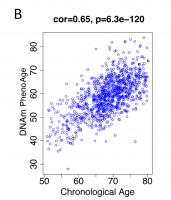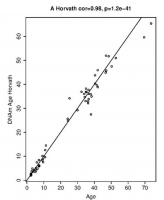It does make sense. Human cells keep a tight control on telomerase production as the TERT gene is near the end of the chromosome, so the tail of the telomere inhibits further telomere production. When cells divide is an opportunity to overcome this limitation. Therefore the cells that divide the most will have the most telomerase. So it is my (educated) guess that more telomerase does extend the life of progenitor and somatic cells (as Turnbuckle says). This could be either a good or bad thing depending. That's why I advocate cycles.
There is indeed a cellular mechanism for keeping telomeres from getting too long, and this involves a trimming mechanism. As for "cells that divide the most will have the most telomerase," not quite true. Transit amplifying cells (TACs) divide the most. That's where you will see epigenetic aging occurring in many tissues, because they take the load of producing new cells, while stem cells are held in reserve. And while they produce telomerase, the level is constrained to less than immortality, otherwise they will keep getting epigenetically older and more dysfunctional while not being replaced. Long life is associated with replacement of cells, not with conservation of old cells--
Clearly long-lived animals protect the steady state of their tissues by continuous replacement of the cells that regularly differentiate and die. An adult human contains approximately 10^12 rapidly multiplying cells. During a typical~30 000 day lifespan (~80 years), each person makes and discards an enormous number of cells from the bone marrow, skin, and gastrointestinal track each day [42].
https://www.ncbi.nlm...les/PMC3370416/
Increasing telomere lengths should improve health in the short term by reducing senescent cells and their inflammatory secretions, but eventually you will have to pay for that, for as cells get epigenetically older with each division, they get more and more dysfunctional. Thus resetting the telomeric clock is robbing Peter to pay Paul. The better solution is to expand stem cells to a more youthful level without interfering with the cells' internal clocks, and let the body replace old cells as it did when you were younger. The body, after all, knows what it is doing. it just runs out of functional stem cells at the front end.
As for cycles, there are some 200 cell types in the body. Some cycle very rapidly, and some very slowly. So which to target? Beyond that, increasing telomeres in even a fast cycling system such as skin cells can take months to return to normal after telomerase extending treatments. At least that's what I've seen from epigenetic tests when I experimented with telomerase enhancers.
Edited by Turnbuckle, 16 February 2020 - 11:31 AM.






















































